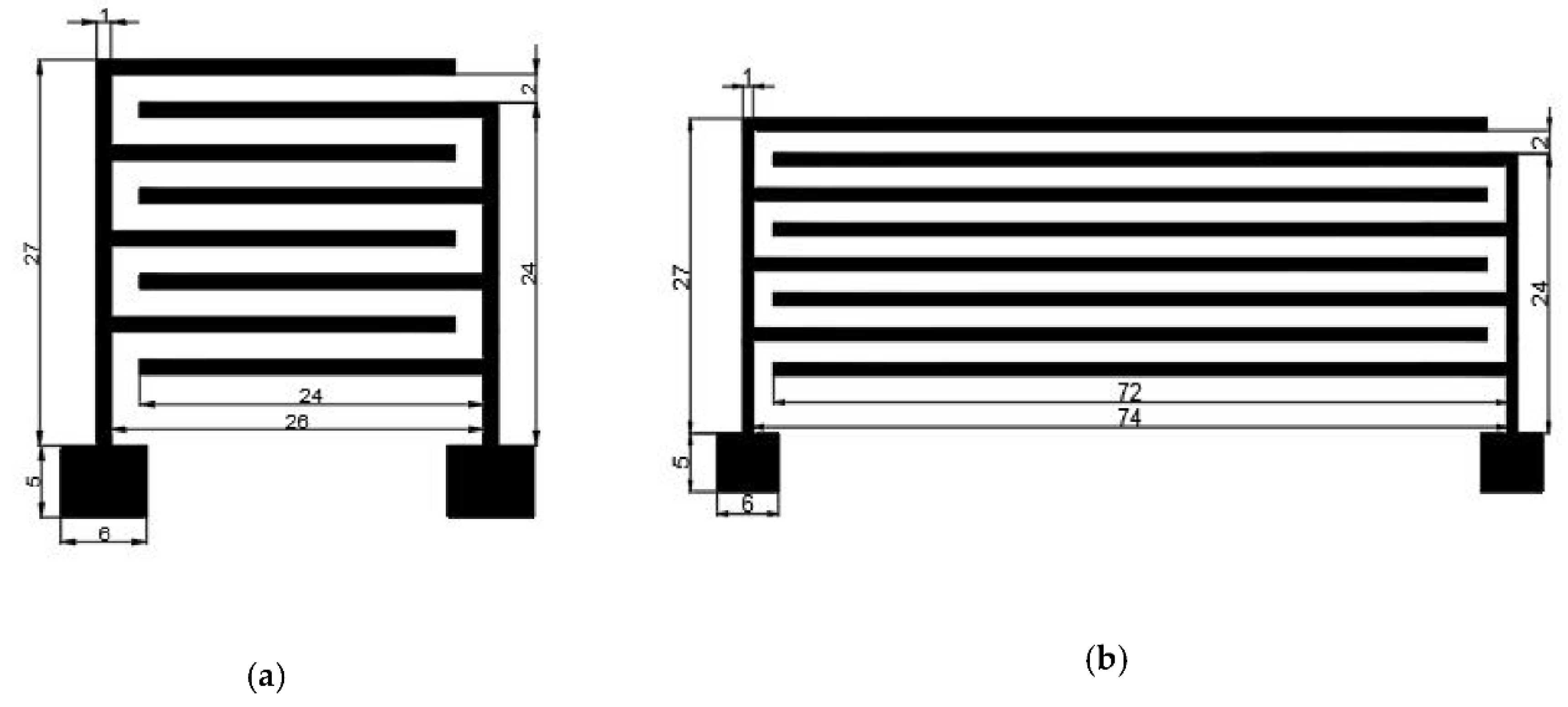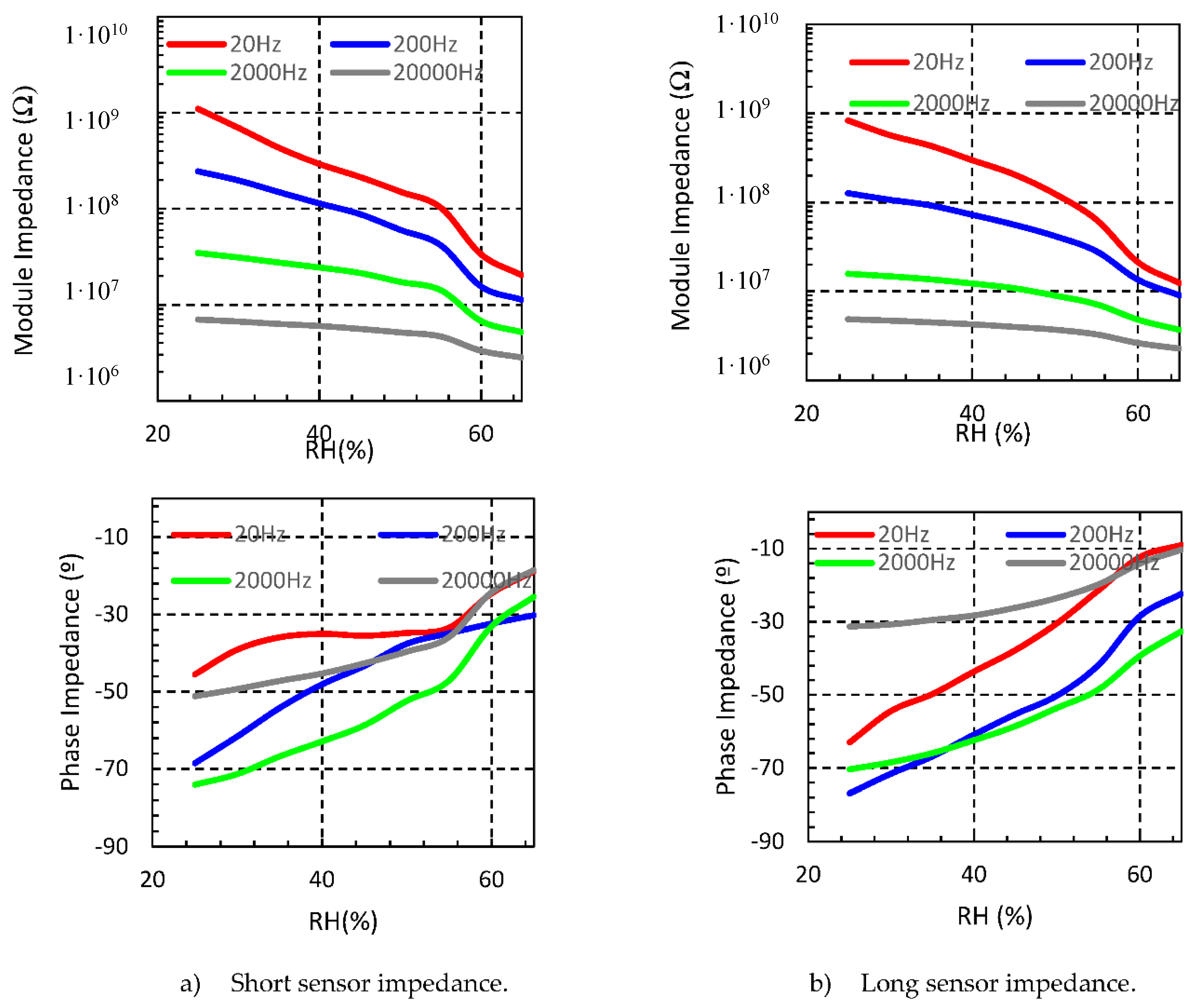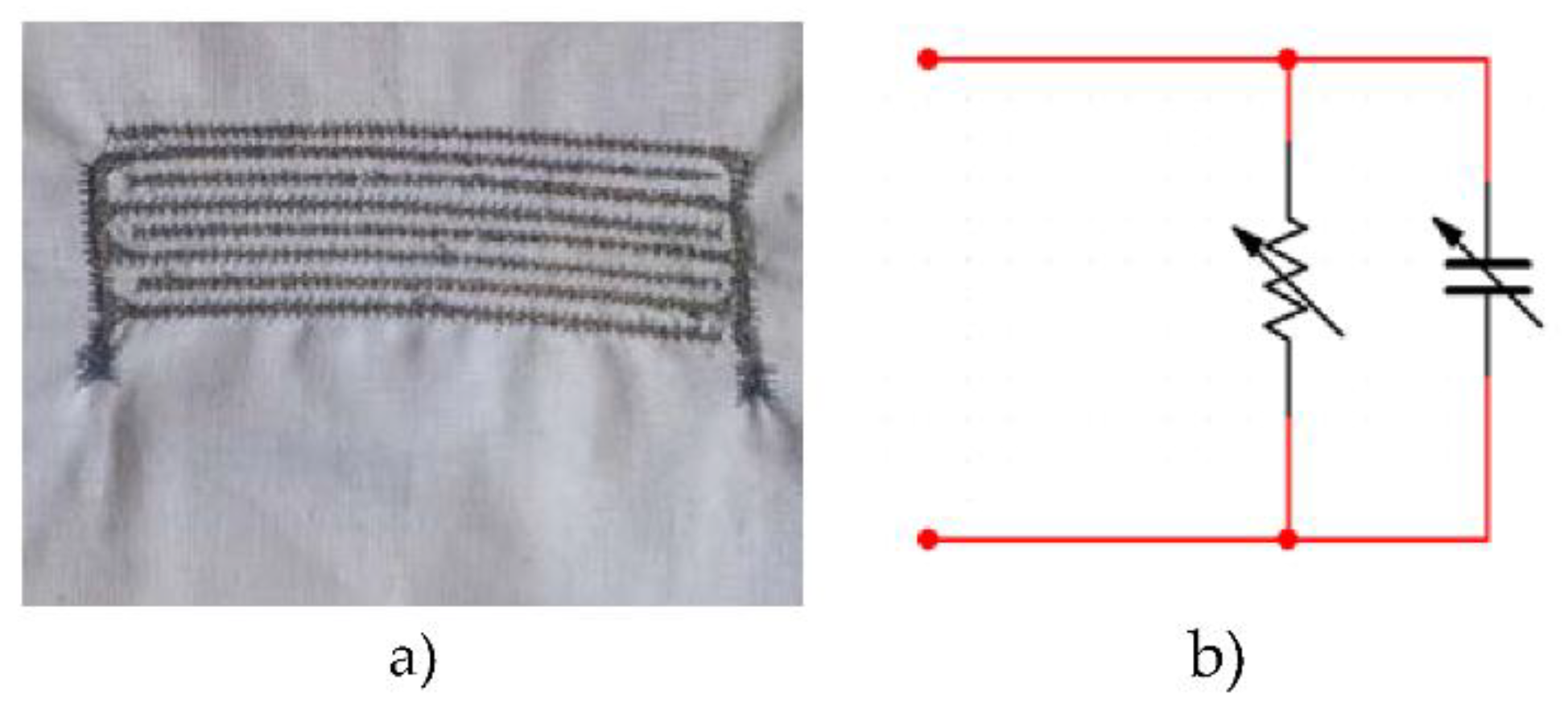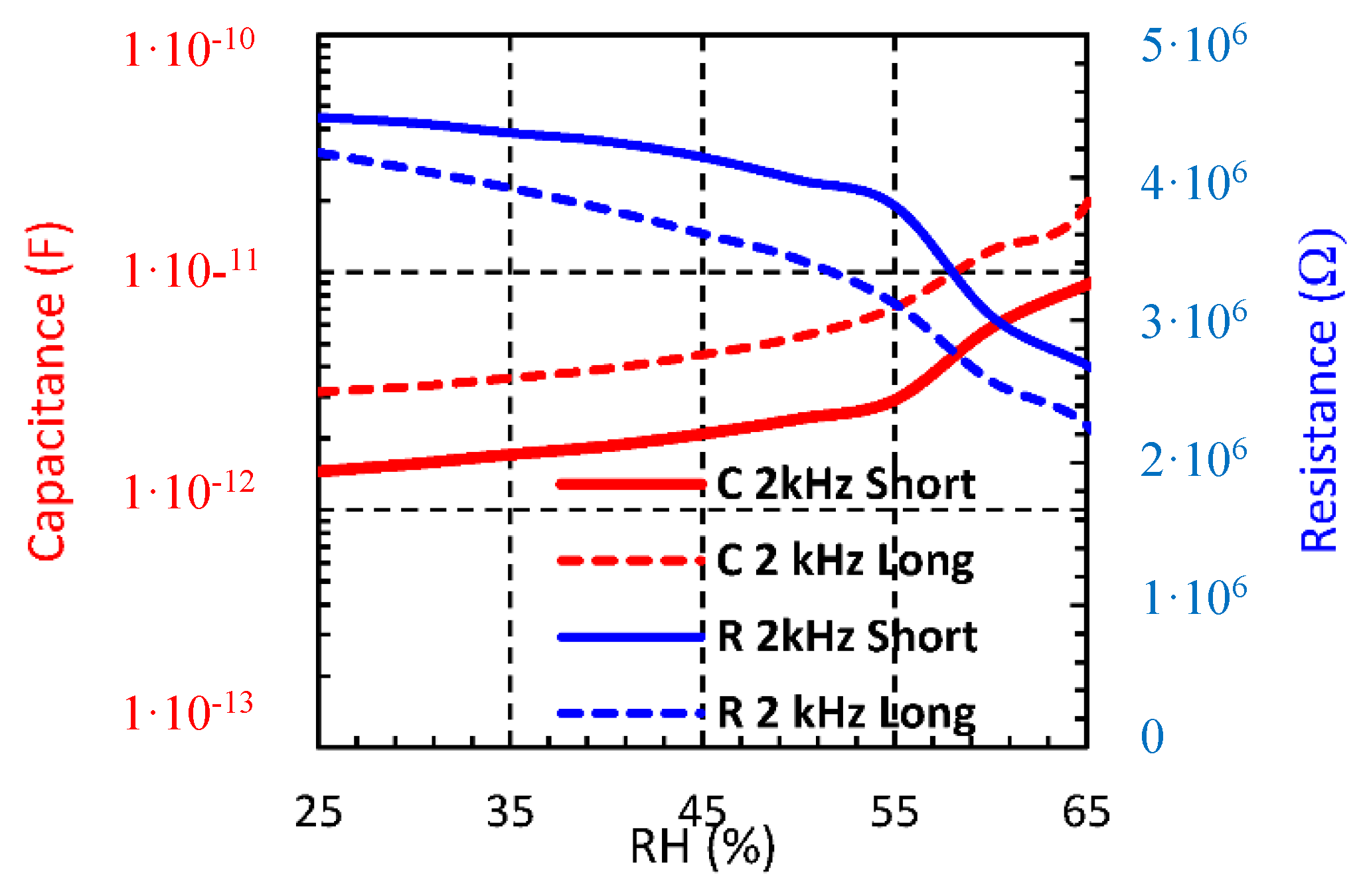Embroidery Textile Moisture Sensor †
Abstract
:1. Introduction
2. Materials and Methods
3. Results and Discussion
4. Conclusions
Acknowledgments
Conflicts of Interest
References
- Castano, L.M.; Flatau, A.B. Smart Fabric Sensors and E-Textile Technologies: A Review. Smart Mater. Struct. 2014, 23, 053001. [Google Scholar] [CrossRef]
- Tartare, G.; Zeng, X.; Koehl, L. Development of a Wearable System for Monitoring the Firefighter’s Physiological State. In Proceedings of the 2018 IEEE Industrial Cyber-Physical Systems (ICPS), St. Petersburg, Russia, 15–18 May 2018; pp. 561–566. [Google Scholar]
- Saenz-Cogollo, J.; Pau, M.; Fraboni, B.; Bonfiglio, A. Pressure Mapping Mat for Tele-Home Care Applications. Sensors 2016, 16, 365. [Google Scholar] [CrossRef] [PubMed]
- Bouwstra, S.; Chen, W.; Feijs, L.; Oetomo, S.B. Smart Jacket Design for Neonatal Monitoring with Wearable Sensors. In Proceedings of the 2009 Sixth International Workshop on Wearable and Implantable Body Sensor Networks, Berkeley, CA, USA, 3–5 June 2009; pp. 162–167. [Google Scholar]
- Devices, A. AD5933 1 MSPS, 12-Bit Impedance Converter, Network Analyzer. Available online: http://www.analog.com/media/en/technical-documentation/data-sheets/AD5933.pdf (accessed on 15 May 2018).





Publisher’s Note: MDPI stays neutral with regard to jurisdictional claims in published maps and institutional affiliations. |
© 2018 by the authors. Licensee MDPI, Basel, Switzerland. This article is an open access article distributed under the terms and conditions of the Creative Commons Attribution (CC BY) license (https://creativecommons.org/licenses/by/4.0/).
Share and Cite
Martinez-Estrada, M.; Moradi, B.; Fernández-Garcia, R.; Gil, I. Embroidery Textile Moisture Sensor. Proceedings 2018, 2, 1057. https://doi.org/10.3390/proceedings2131057
Martinez-Estrada M, Moradi B, Fernández-Garcia R, Gil I. Embroidery Textile Moisture Sensor. Proceedings. 2018; 2(13):1057. https://doi.org/10.3390/proceedings2131057
Chicago/Turabian StyleMartinez-Estrada, Marc, Bahareh Moradi, Raúl Fernández-Garcia, and Ignacio Gil. 2018. "Embroidery Textile Moisture Sensor" Proceedings 2, no. 13: 1057. https://doi.org/10.3390/proceedings2131057
APA StyleMartinez-Estrada, M., Moradi, B., Fernández-Garcia, R., & Gil, I. (2018). Embroidery Textile Moisture Sensor. Proceedings, 2(13), 1057. https://doi.org/10.3390/proceedings2131057






